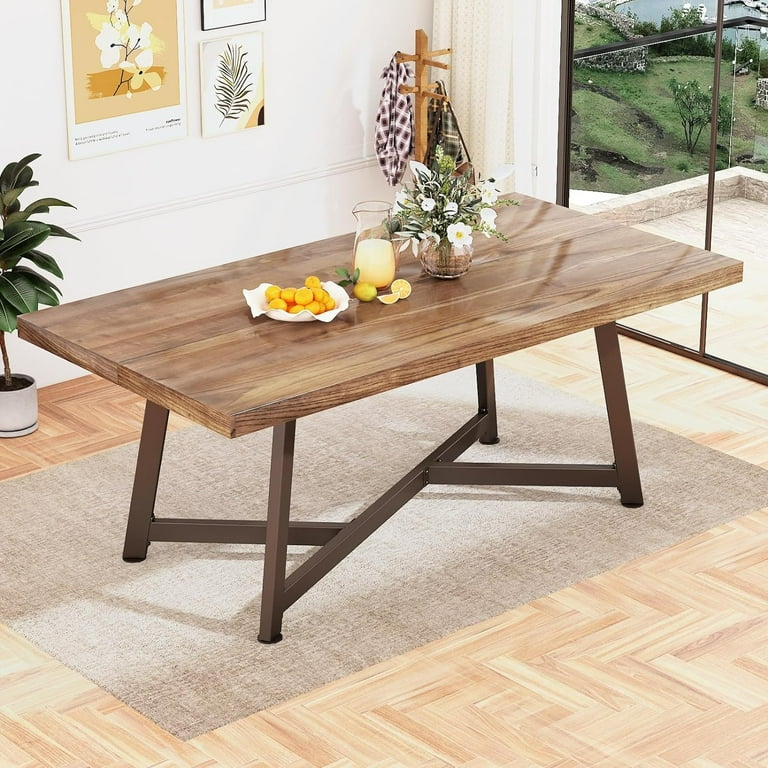Affordable and High-Quality Dining Room Table Legs for Every Budget
Affordable and High-Quality Dining Room Table Legs for Every Budget
Blog Article
From Conventional to Modern: Discover the Suitable Dining-room Table Legs for Your Design
While timeless designs such as cabriole and turned legs evoke a sense of classic elegance, contemporary designs like hairpin and geometric options offer a chance for striking aesthetic interest. As you consider these aspects, the question remains: exactly how can you effortlessly incorporate these varied leg designs to develop an unified eating experience?
Recognizing Table Leg Styles
The range of dining-room table leg styles can dramatically affect both the appearances and functionality of the space. Each leg style contributes one-of-a-kind useful features and visual components, dealing with varied style choices and use demands. Recognizing these designs is vital for picking the ideal dining table that straightens with your general interior decoration vision.
As an example, tapered legs use a clean, timeless appearance that can improve an area's elegance, while pedestal bases provide security and optimize legroom, making them ideal for smaller rooms. Barrette legs, a characteristic of mid-century modern layout, introduce an industrial style, enabling an airy, open feel. Trestle legs stimulate rustic charm, providing robust assistance and a feeling of timelessness.
Wooden legs can bring heat and appearance, whereas metal choices usually communicate a streamlined, contemporary ambiance. Inevitably, recognizing table leg designs is essential for developing a cohesive dining area that reflects individual style while making sure functionality and convenience.
Conventional Table Leg Options
When picking eating space table legs, traditional alternatives often symbolize classic elegance and workmanship. These designs mirror an abundant heritage and a commitment to quality, making them excellent for those who value classic visual appeals.
One of one of the most legendary conventional leg styles is the cabriole leg, identified by its elegant rounded shape. This layout often features ornamental makings and is most typically found in Queen Anne and Chippendale furniture. Another preferred alternative is the turned leg, which flaunts a series of smooth, rounded shapes that supply a classic look while maintaining stability.
Additionally, the straight leg, while easy, provides a durable and unadorned structure that can blend seamlessly with a range of tabletop designs. For those attracted to ornate outlining, claw-and-ball feet legs stimulate a feeling of magnificence and can work as a magnificent focal factor in any type of eating space.
Lastly, stand bases, although not strictly legs, supply a different conventional alternative that enables sufficient legroom and can be wonderfully carved. Each of these traditional leg designs adds to the overall ambiance of an eating room, weding feature with aesthetic appeal.

Modern Table Leg Styles
Modern table leg styles offer a varied variety of styles that highlight tidy lines and cutting-edge products. These styles usually focus on performance while offering as striking prime focus within a dining room. Minimalist looks prevail, with legs crafted from products such as steel, glass, and engineered timber, which add to a modern and airy feeling.
One popular style is the barrette leg, identified by its slim, tapered framework that provides stability without overwhelming the table top (dining room table legs). This design is usually discovered in mid-century modern furniture and can effortlessly match numerous table shapes. An additional pattern is the usage of geometric forms, where legs may handle asymmetrical or angular kinds, including aesthetic interest and a touch of creativity

Blending Designs for Unique Areas
Frequently, home owners seek to create distinct dining areas that show their personal style by mixing various style elements. This approach permits the consolidation of diverse appearances, causing a harmonious yet distinctive atmosphere. For example, matching a rustic wooden table with sleek, modern-day metal legs can create a distinctive contrast that raises the area's blog overall charm.
Additionally, integrating vintage table legs with modern table tops can evoke a sense of history while preserving a modern sensibility. Such combinations not only display specific taste however additionally motivate imagination, enabling property owners to curate a space that really feels both personal and inviting.
Shade plays a crucial function in this mixing process; selecting table legs that complement or contrast with the existing shade system can boost visual passion. Whitewashed legs can soften the boldness of a dark table surface, producing a balanced visual.
Tips for Selecting the Right Legs
Picking the right table legs is vital for accomplishing both performance and aesthetic allure in your dining area. Begin by thinking about the overall design of your space. Conventional setups gain from legs that feature elaborate makings or turned styles, while modern rooms may ask for smooth, minimal styles.
Following, examine the elevation and security of the find out legs. dining room table legs. Common dining tables vary between 28 to 30 inches in height, so ensure the legs match this dimension for convenience. Furthermore, robust products, such as wood or steel, can enhance security and long life
Review the leg form also-- choices include straight, tapered, or pedestal styles. Straight legs offer a classic look, while conical legs can add a touch of style. Pedestal bases offer adequate legroom and are perfect for smaller sized areas.
Verdict
In summary, picking the excellent dining area table legs calls for careful consideration of both conventional and contemporary designs. By integrating leg style, elevation, and material with the total decoration, a natural and inviting environment can be achieved.
The variety of dining area table leg styles can significantly affect both the visual appeals and capability of the room. Eventually, recognizing table leg styles is vital for producing a cohesive eating location that shows individual design while making certain functionality and comfort.One of the most legendary typical leg styles is the cabriole continue reading this leg, identified by its elegant bent shape. Straight legs offer a traditional appearance, while tapered legs can include a touch of sophistication.In recap, choosing the perfect eating space table legs needs mindful consideration of both traditional and modern styles.
Report this page